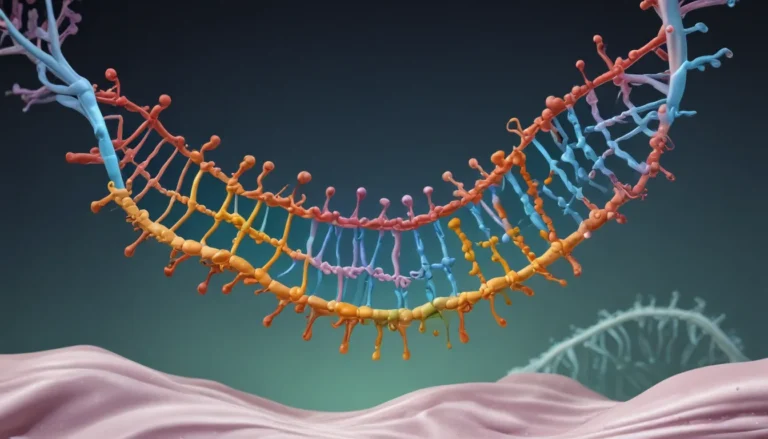A Note About Images: The images used in our articles are for illustration purposes only and may not exactly match the content. They are meant to engage readers, but the text should be relied upon for accurate information.
In the vast realm of biodiversity, one crucial aspect that scientists delve into is species evenness. Species evenness refers to the equitable distribution of different species within an ecosystem, offering insights into the health and stability of the natural world. This article aims to uncover 12 captivating facts about species evenness, shedding light on its significance in ecological research and conservation endeavors.
Unveiling the Concept of Species Evenness
Species evenness, also known as species equitability, reflects how evenly individuals are dispersed among various species in a specific habitat. It considers both the variety of species present and the distribution of individuals among those species, offering a glimpse into the ecological balance within an ecosystem.
The Importance of Species Evenness in Ecosystem Health
Species evenness plays a pivotal role in determining the overall well-being and resilience of an ecosystem. A balanced distribution of species signifies a harmonious ecological community where no single species dominates, fostering biodiversity, enhancing ecosystem resilience, and improving overall ecosystem functionality.
Understanding the Relationship Between Species Richness and Evenness
Species richness and evenness are intertwined components of biodiversity, with richness denoting the total number of species present and evenness quantifying the relative abundance of each species. A high species richness coupled with high evenness signifies a diverse and well-balanced ecosystem.
Nurturing Ecosystem Resilience Through Species Evenness
Ecosystems characterized by high species evenness exhibit a heightened ability to withstand environmental fluctuations and disturbances. In the event of the removal of one species, the equilibrium maintained by evenness allows other species to compensate, preserving ecosystem stability and functionality.
The Impact of Human Activities on Species Evenness
Human-induced activities such as habitat destruction, pollution, and climate change can disrupt species evenness, leading to imbalances favoring certain species over others. Conservation efforts are imperative in preserving and restoring species evenness to safeguard biodiversity and ecosystem health.
Delving into the Measurement of Species Evenness
Various mathematical indices like the Shannon-Weaver Index and Simpson’s Diversity Index are used to quantify species evenness. These indices take into consideration both species quantity and their relative abundances, providing a numerical representation of the evenness within a specific ecosystem.
Harnessing Keystone Species for Maintaining Species Evenness
Keystone species, with their significant impact on ecosystem structure and function, aid in maintaining species evenness by preventing species dominance and fostering a balanced distribution of resources and habitats.
Curbing the Disruption Caused by Invasive Species
Invasive species, characterized by their ability to outcompete native species, can disrupt species evenness by monopolizing resources and displacing other organisms. This disruption can lead to reduced biodiversity and alter the ecological dynamics of an ecosystem.
The Role of Disturbances in Shaping Species Evenness
Ecological disturbances such as wildfires, floods, and natural succession may momentarily disrupt species evenness. However, these disturbances also create opportunities for other species to flourish, contributing to the overall equilibrium of the ecosystem in the long run.
Enhancing Ecosystem Services Through Species Evenness
Ecosystem services like pollination, nutrient cycling, and water purification rely on a balanced species distribution. Species evenness ensures efficient execution of these ecological functions, benefiting both the ecosystem and human welfare.
Adapting to Climate Change for Sustainable Species Evenness
Climate change poses significant challenges to species evenness by altering temperature and precipitation patterns. Some species may thrive under these changes, leading to shifts in species composition and potentially impacting the stability and evenness of ecosystems.
Championing Conservation Efforts Through Species Evenness
Upholding species evenness emerges as a critical conservation goal, involving habitat preservation, invasive species management, and reduction of human-induced disruptions. By safeguarding and enhancing species evenness, biodiversity can be preserved, ensuring the long-term resilience of ecosystems.
Embracing the Diversity in Species Evenness
Species evenness, with its intricate role in biodiversity and ecosystem functionality, unveils the intricate tapestry of life in the natural world. By comprehending and monitoring species evenness, scientists gain crucial insights into ecosystem health, guiding conservation actions to protect and restore biodiversity.
Conclusion
Species evenness stands as a cornerstone in upholding biodiversity and ecological stability, offering invaluable insights into the intricate balance of ecosystems. This article has explored 12 captivating facts about species evenness, underscoring its significance in promoting biodiversity, resilience, and ecosystem services. By recognizing the importance of species evenness and its implications, we can nurture a balanced and thriving natural world.
FAQs
- What is species evenness?
-
Species evenness refers to the equitable distribution of different species within a community or habitat, measuring the evenness of individuals across species.
-
Why is species evenness important?
-
Species evenness influences ecosystem stability and resilience, fostering biodiversity and enhancing ecosystem functioning.
-
How is species evenness measured?
-
Various statistical indices like the Shannon index or the Simpson index are commonly used to measure species evenness, considering species richness and evenness.
-
What factors affect species evenness?
-
Factors like resource availability, competition, predation, disturbance events, and human activities can influence species evenness.
-
How does species evenness relate to ecosystem resilience?
-
Species evenness is linked to ecosystem resilience, affecting the ability of an ecosystem to withstand disturbances and adapt to environmental changes.
-
Can species evenness change over time?
-
Yes, species evenness can change due to natural processes like population dynamics, migration, ecological succession, or human activities.
-
What are the conservation implications of species evenness?
-
Species evenness is vital for conservation efforts, aiding in evaluating ecosystem health and implementing strategies to protect and restore biodiversity.
-
How does species evenness contribute to ecosystem services?
-
Species evenness enhances the efficiency and resilience of ecosystem services like nutrient cycling, pollination, and pest control, benefiting both ecosystems and human populations.
-
Is there a relationship between species evenness and species richness?
-
While species richness denotes the total number of species, evenness measures the relative abundance of each species, interconnecting to portray biodiversity.
-
Can species evenness be used as an indicator of ecosystem health?
- Yes, species evenness can signal ecosystem health, portraying a balanced distribution of individuals among species in a harmonious ecosystem.
Species evenness embodies the essence of biodiversity and ecosystem equilibrium, emphasizing the need for conservation efforts to preserve the intricate web of life on our planet. As we delve into the captivating world of species evenness, let us embrace the diversity and resilience of nature, working towards a sustainable and balanced natural world.






